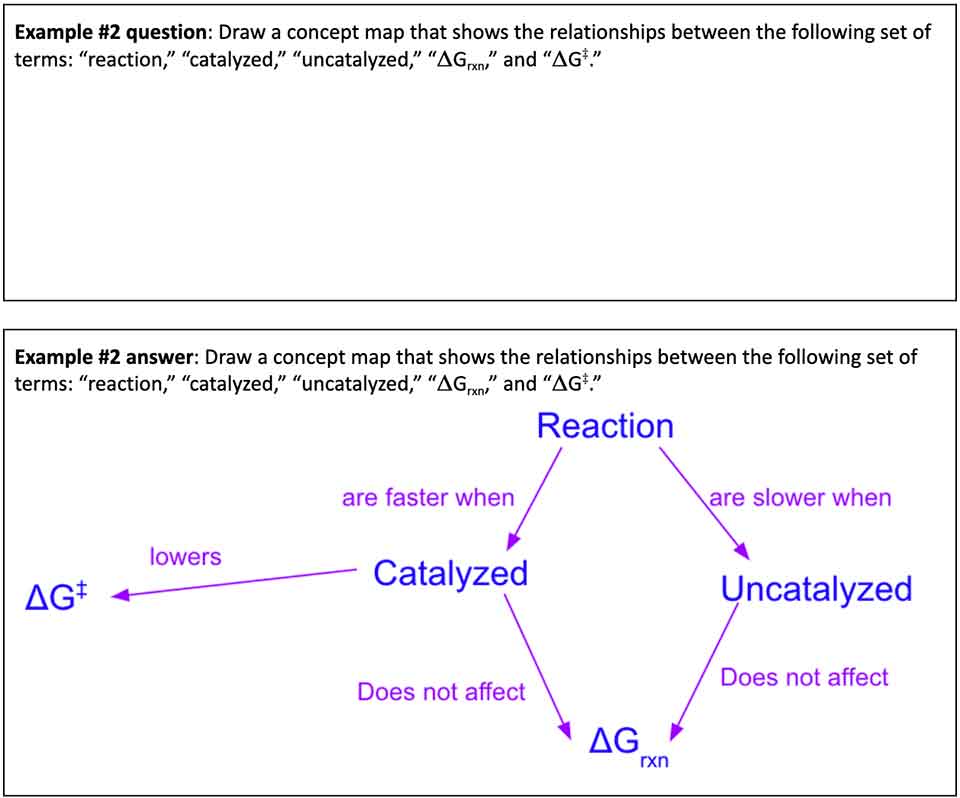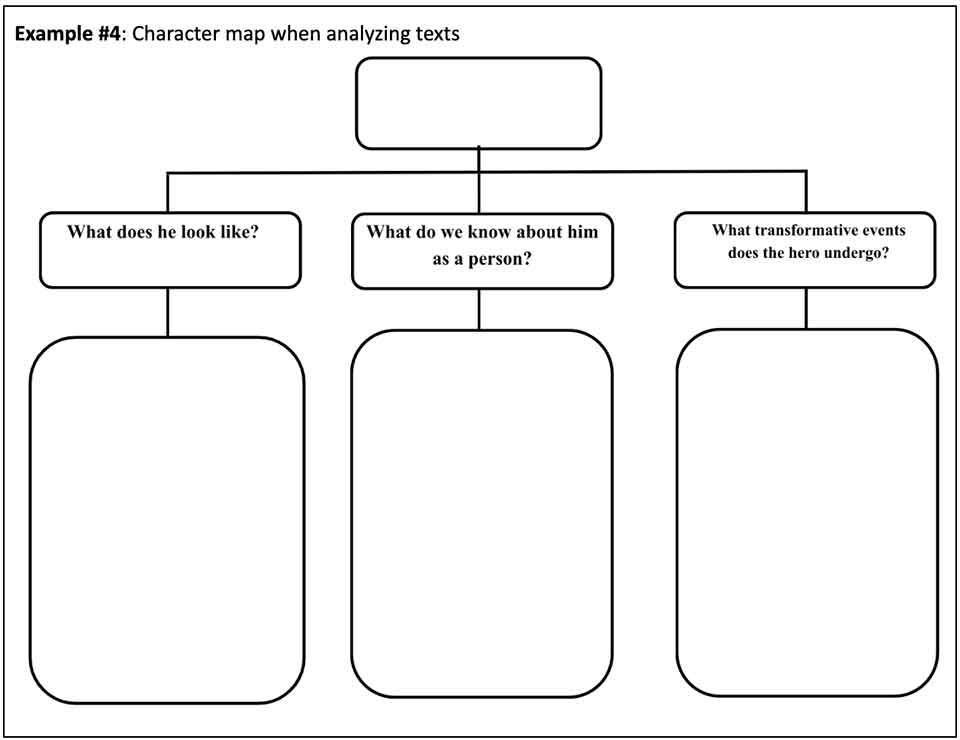After teaching students about a particular skill or concept, ask them to spend five minutes working to solve a practice problem, or a question from last year’s problem set, in groups of three students. Students can work at their tables or up at blackboards, and you can collect their answers through a multiple-choice poll or by asking for a volunteer to be ready to share the answers from each group.
The instructor provides statements, readings, proofs, or other material that contains errors. The students are charged with finding and correcting the errors. Concepts that students commonly misunderstand are well suited for this activity.
Example of a statement correction activity from a chemistry course

Example of a statement correction using images/diagrams

The goal of this activity is for students to order a set of item that have a logical order, such as steps in a biological process, a series of historical events, or logical steps in an argument. As one strategy, the instructor provides students with a list of items written on strips of paper for the students to sort. An instructor can also leave one step “blank” and require that students fill it in. Removable labels with printed items also work well for this activity.
Students write a short answer in response to a prompt during class, requiring students to articulate their knowledge or apply it to a new situation. For example, after asking your students a question, explicitly require them all to write out one, two, or three ideas that would capture their initial thoughts on how to answer the question posed. This act of writing itself may even lead students to discover points of confusion or key insights, and it can often provide students the time to build up the confidence to share their thoughts in an open group discussion.
Student write questions about course material on index cards, which are distributed to other students. Each student researches the question that they received, and then shares what they have learned with the rest of the class.
Students call out answers to an open-ended, creative question as the instructor or another student records the ideas on the board. Questions that can have many correct answers can encourage multiple students to engage.
During class, the instructor asks a multiple-choice question. Students can respond by raising the appropriate number of fingers or by holding up a colored card, where colors correspond to the different answers.
Guide for using Echo360 for polling
Example of a multiple choice polling question (from chemistry):

This activity prompts students to formally describe the relationship between concepts. Typically, students are provided with a list of terms. They are asked to arrange the terms on paper and draw arrows between related concepts, labeling each arrow to verbally explain the relationship between the two terms connected by the arrow. Concept maps are particularly useful to help students make connections between seemingly abstract concepts or concepts learned at different times during the semester.
Software for creating concept maps:
Concept map example 1

Concept map example 2

Word map

Character map
A diagram representing logical sets pictorially as circles or closed curves, with common elements of the sets being represented by the areas of overlap among the circles.
Example of a Venn diagram (from chemistry):

We often learn best by identifying differences between two examples. Asking students to find the similarities and differences between two theories, methods, objects, data sets, etc., can help students identify the distinguishing criteria that experts in a discipline use to organize and categorize information. Activities that prompt students to find the similarities and differences between two related concepts, skills, facts, theories, or objects help students learn both how the topics in question are superficially different (or similar) and motivates a deeper understanding of why these differences (or similarities) matter.